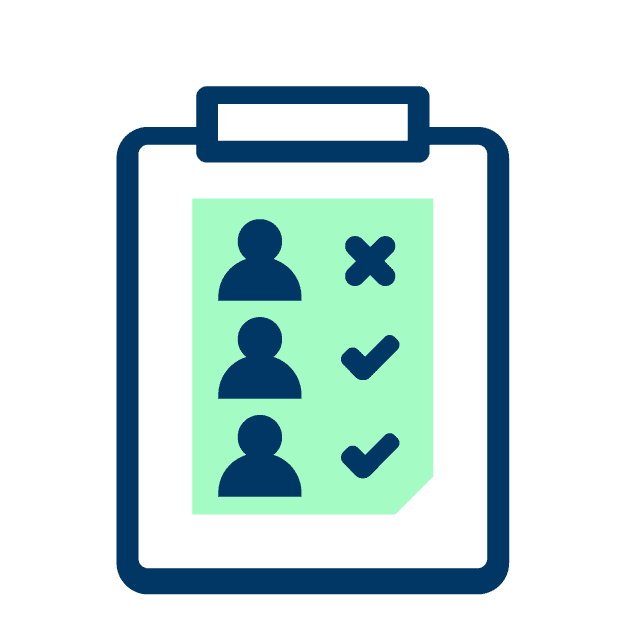A: Hilliard City Schools provides students with a Multi-Tiered System of Supports (MTSS) to help students reach their full potential. Contact your child’s teacher to discuss your concerns and provide any information you think may be helpful to help the teacher understand your concerns.
At any time you suspect your child has a disability, you may request that your child be evaluated. Evaluation consists of a variety of means to gather information about how your child is developing and how your child learns and functions.
A: Hilliard City Schools provides students with a Multi-Tiered System of Supports (MTSS) to help students reach their full potential. This means that when a teacher has a concern, the teacher or the district may:
- Contact the student’s parents for information;
- Try different strategies for teaching the student and document the results;
- Use an intervention assistance team to generate additional ideas for teaching the student and make a record of the results; and/or
- Contact the student’s parents to participate in a meeting to determine if your child is suspected of having a disability.
A: An educational evaluation serves a different purpose than a diagnosis by a medical professional. An education evaluation may use some testing information from outside professionals to assist in determining whether a student qualifies for special education and related services in order to access the educational curricula.
- Currently enrolled students: Contact the Special Education Coordinator for your child’s building
- Preschool students whether or not currently enrolled: Contact the Hilliard Preschool
-
Prior to or during enrollment: Contact the Hilliard City Schools Welcome Center by telephone at (614) 921-7096 or by email at welcomecenter@hboe.org
-
Another resource for you to ask questions, raise concerns or seek guidance is the district’s Parent Mentor.
A: An Individualized Education Program (IEP) is the written document reviewed each year that determines the services, accommodations, and modifications that your child will receive. If a service or accommodation is written into the IEP, your child must receive it.
While goals and objectives along with outlined services and accommodations are the bulk of the IEP document, other things such as a full profile of your child, extended school year eligibility, transportation needs, a summary of evaluation results and other considerations are part of the IEP document.
A: The purpose of the initial IEP (Individualized Education Program) meeting is to document the special education and related services for your child. This can be a stressful process and we are here to help you.
Your child’s case manager will send you a draft copy of the IEP before the meeting. If you have time to read over the draft before the meeting, that is helpful.
You can expect that a team of people will be present at the meeting. Parents are a member of that team to provide input in the meeting along with all other members of the team.
The team meets to:
- Describe where your child is now in terms of academic and functional performance areas
- Develop long-term goals for your child to achieve during the year
- Identify short-term steps for your child to help accomplish the goals
- Decide how the team will know when the child has met the goals
- Identify special instruction and related services that your child will receive to help them meet the goals including the amount of time your child will receive specialized instruction
- Discuss accommodations that will help your child meet the goals
A: Your child’s case manager will send you a draft copy of the IEP before the meeting. If you have time to read over the draft before the meeting, that is helpful. Your child’s educational team needs your input, even before the meeting or draft copy. Parents are encouraged to share with the other members of the team about your child’s interests outside of school, favorite hobbies, and the activities that motivate your child. This helps everyone connect with your child as a person and learner.
Don’t be modest, go ahead and share accomplishments and strengths of your child’s personality. It’s also safe to be vulnerable and share areas you anticipate your child might need additional encouragement and support from what you observe at home. You are your child’s first teacher and know your child best. Supporting your child’s learning and growth by participating in the meeting and sharing ideas makes a stronger plan for your child.
It is a good idea to gather all your child’s records and evaluations, make a list of questions or concerns you would like to discuss and review any documents the team provides to you including a draft of the IEP, progress reports and evaluations. Be sure to ask questions about anything that you do not understand – education has its own vocabulary, and it is sometimes difficult to work through a document.
Develop a system to keep your documents organized. You might want to have a binder or series of folders you can easily access. It is easier to start out organized than to try and gather information together later.
A: The best first contact is your child’s Intervention Specialist or related service provider.
A: Unless otherwise documented in the Individualized Education Program (IEP), an IEP progress report is issued at the end of each grading period on the same timeline as your child’s general education progress report. The IEP Progress Report includes data on goals and objectives. If you have questions or concerns, please contact your student’s case manager Intervention Specialist at any time.
A: No, you do not have to wait. The IEP team reconvenes annually to create a new IEP with new goals and objectives for a student. However, any team member, including the parent, may request an IEP team meeting during the course of an IEP cycle to discuss progress or ask for a team discussion on amending the IEP.
A: Not necessarily. Each student with an IEP has an individualized schedule based on their needs. Your child’s team, including you, will discuss this at your child’s IEP meeting. The goal is to educate students with a disability, to the maximum extent possible, with students without a disability. This is a requirement of the Individuals with Disabilities Education Act (IDEA) and is known as the Least Restrictive Environment (LRE).
A: A student is re-evaluated every three years. The purpose of this reevaluation is to find out if your child continues to be a “child with a disability,” as defined within the law; and your child’s educational needs.
A: Students who do not meet the qualifications for special education and related services may still receive accommodations through a 504 Plan or MTSS.
Hilliard City Schools provides students with a Multi-Tiered System of Supports (MTSS) to help students reach their full potential. The team will provide information to you about the different types of support which may be available to help your child.
You may find this high level summary of MTSS helpful to understand the supports available to your child.
A: The difference between an IEP and a 504 plan can sometimes be confusing. Understood.org is one of the many organizations that provides information for people who learn and think differently. Their website contains a variety of resources designed to help people understand the differences between an IEP and a 504 Plan. The following is an excerpt from one of their resources.
| Question | IEP | 504 plan |
| What is it? | A formal plan that details the special education services and supports a school will provide to meet the unique needs of a student with a disability. Includes specially designed instruction. | A formal plan for how a school will remove barriers so a student with a disability can learn alongside peers in general education. Doesn’t include specially designed instruction. |
| Which law covers it? | The Individuals with Disabilities Education Act (IDEA): This is a federal special education law. | Section 504 of the Rehabilitation Act of 1973: This is a federal civil rights law that protects against discrimination. |
| What’s in the plan? | The IEP is a written plan. It must include:
|
Unlike an IEP, a 504 plan doesn’t have to be a written document. 504 plans generally include:
Less common but possible to include:
|








